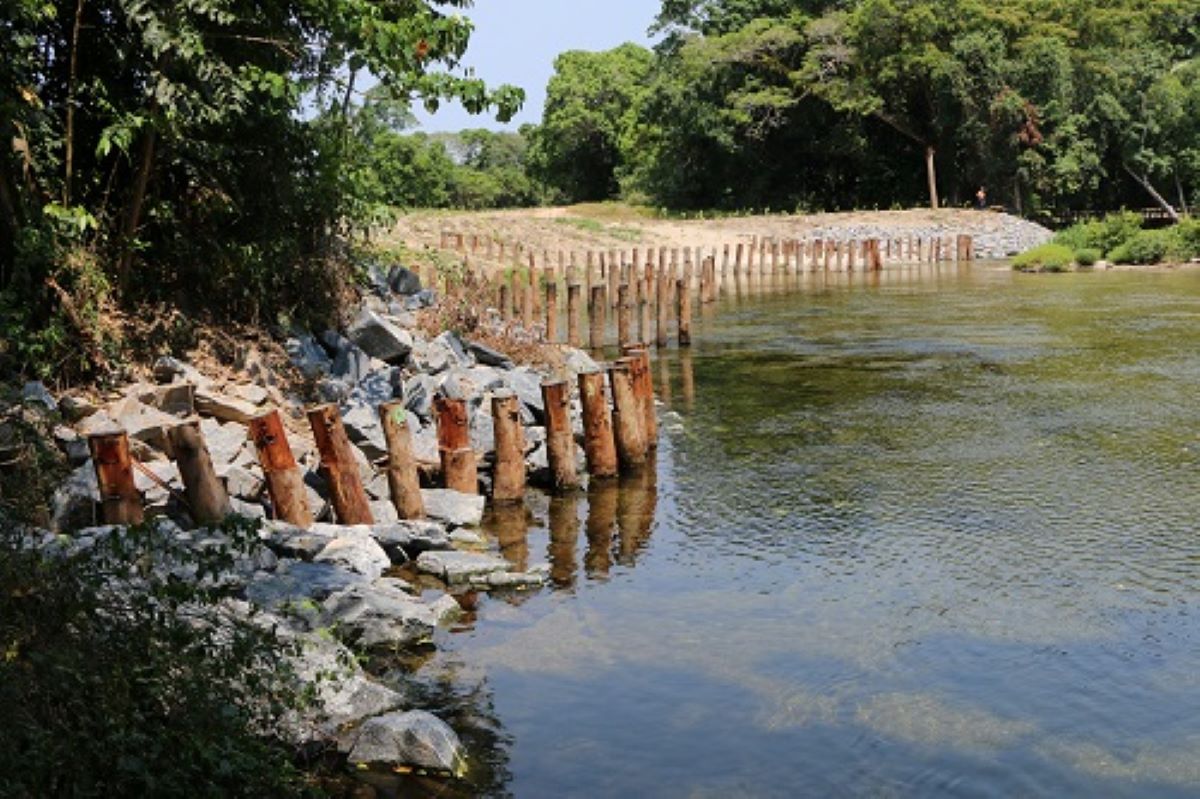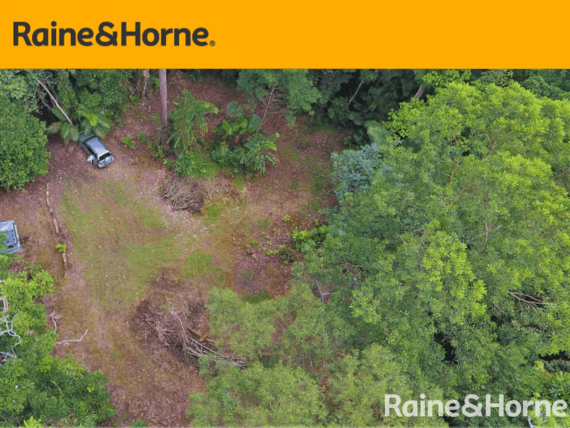Heavy rain has a heavy price to pay
Infrastructure

Timber pile fields will help to protect the Mossman River and two of its bridges during the wet season.
Flood-damaged riverbanks at Foxton Bridge and Anich’s Bridge in Mossman have been repaired using pile field structures, bringing a new approach to erosion solutions to the Far North.
Terrain NRM has been working with Douglas Shire Council, landholders and Neilly Group Engineering on the two river projects, which are jointly funded by the Australian and Queensland governments under Disaster Recovery Funding Arrangements.
Terrain’s Jen Mackenzie said floodwaters had stripped back 80 metres of riverbank at Foxton Bridge and 30 metres at Anich’s Bridge.
“A monsoonal event in early 2019 left trees hanging by their roots and changed the river’s course,’’ she said. “Now the erosion is progressively threatening these bridges and the rail corridor. Without enough land for rock battering or vegetation on the banks themselves, timber pile fields are a good option.”
Pile fields are multiple rows of piles, designed to slow down water and build up sediment, to protect and repair damaged riverbanks. They are used in southern Australia and in other parts of the world, and one was recently constructed in the Herbert River catchment near Ingham as part of disaster recovery work.
“The challenge, when building these fields in the Wet Tropics, is the high volume of rain,’’ Ms Mackenzie said. “In this region more robust engineering and modelling is needed, for designs tailored to our weather conditions.”
To create the pile fields, seven-metre hardwood poles were driven five metres into the riverbed and bank. The work in Mossman also included riverbank re-profiling, rock buffers and revegetation with native trees.
Ms Mackenzie said the result was a win for the environment and the community.
“Vegetation along the riverbanks is the long-term solution that helps to stop erosion and other damage caused during major floods,’’ she said. “The Mossman River flows to the ocean and when it floods debris and sediment is carried downstream and out to the Great Barrier Reef where it impacts seagrass beds, fish and other marine life.
“The pile fields are designed to trap sediment and support vegetation so in coming years we expect vegetation to establish in and around the pile fields and in time, as the timber piles break down, this vegetation will take over.”
Thank you!
Newsport thanks its advertising partners for their support in the delivery of daily community news to the Douglas Shire. Public interest journalism is a fundamental part of every community.
Got a news tip? Let us know! Send your news tips or submit a letter to the editor here.
* Comments are the opinions of readers and do not represent the views of Newsport, its staff or affiliates. Reader comments on Newsport are moderated before publication to promote valuable, civil, and healthy community debate. Visit our comment guidelines if your comment has not been approved for publication.

















